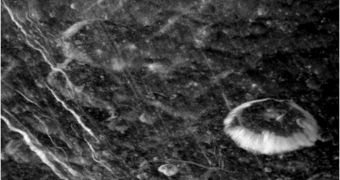Experts managing the NASA Cassini spacecraft announce the successful completion of a double-flyby last week, which targeted two of the moons orbiting the gas giant Saturn. The space probe has been orbiting this planetary system since July 1, 2004, after being launched on October 15, 1997, from the Cape Canaveral Air Force Station, in Florida. Since then, it has been producing inestimable science of the planet, its moons and its rings. The new flyby was one of the few in which a fortuitous alignment of the natural satellites allowed for Cassini to pass by two of them within less than two days.
In addition to this, it did so without having to perform any corrective maneuvers in the process. First, on April 5, it flew past the now-famous moon Titan, which is believed to be one of the places in our solar system that could support life forms. Its polar regions are covered in lakes of liquid hydrocarbons, potentially methane and ethane, and its atmosphere is thick with nitrogen. After moving past Titan, Cassini headed over to the moon Dione, on April 7. This is one of the least-analyzed bodies orbiting Saturn. The goal was to collect more data about it, and the influence it has on the planet's rings.
Some astronomers suspect that Dione, like Enceladus, releases plumes of matter from its surface, which then serve to fuel the growth of one of Saturn's rings. Over the years Cassini has been in the gas giant's orbit, only a handful of observation sessions were dedicated to Dione, mostly on account of the fact that the necessary alignment to allow for direct studies happens very rarely. Over the past six years, only two other double-flybys were possible, says the team of experts managing Cassini. They are based in Pasadena, California, at the NASA Jet Propulsion Laboratory (JPL).
The flyby was somewhat hindered by an error that Cassini suffered, when it experienced an unexpected, autonomous reset. This meant that the spacecraft collected fewer images of Titan than anticipated. However, the malfunction was fixed by the time the probe swung past Dione, which was the main target of the flight. This was only the second flyby around this moon, and experts are currently peering over the data, in search of how the celestial body influences the rings. Experts are also puzzled by a formation on its surface, which made of a strange, dark material. They are hoping the new data will provide some clues as to its origin.

 14 DAY TRIAL //
14 DAY TRIAL //